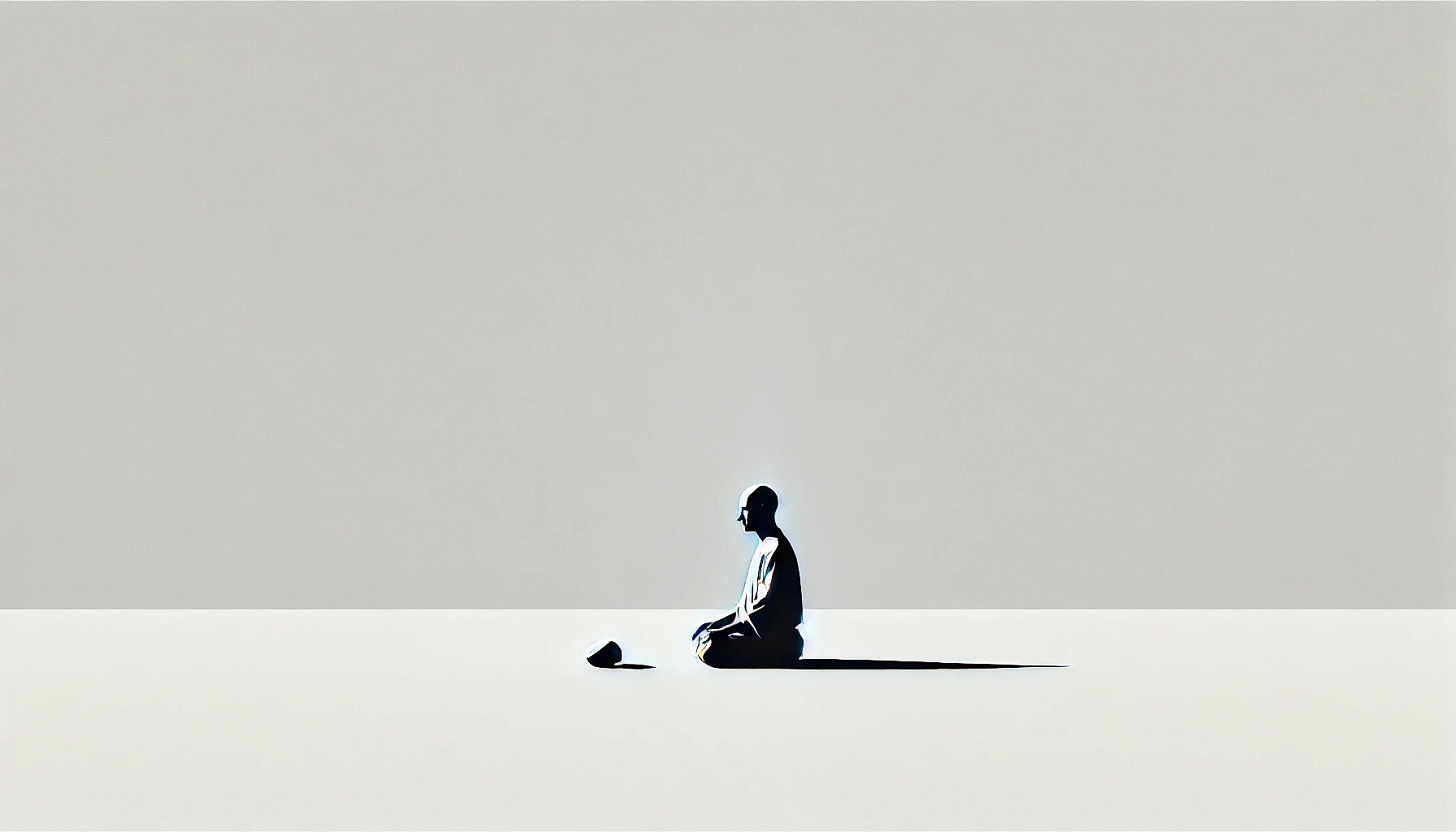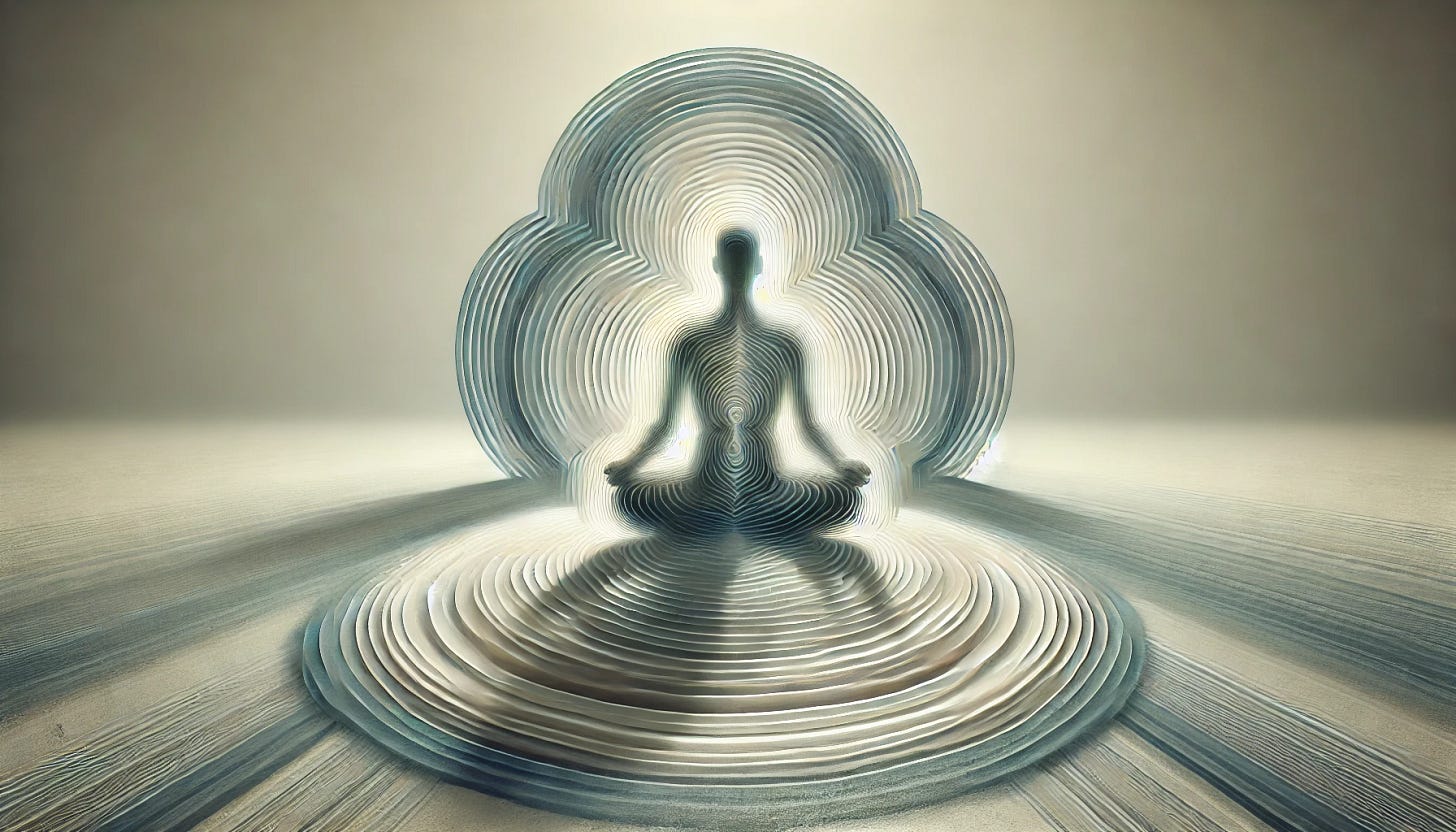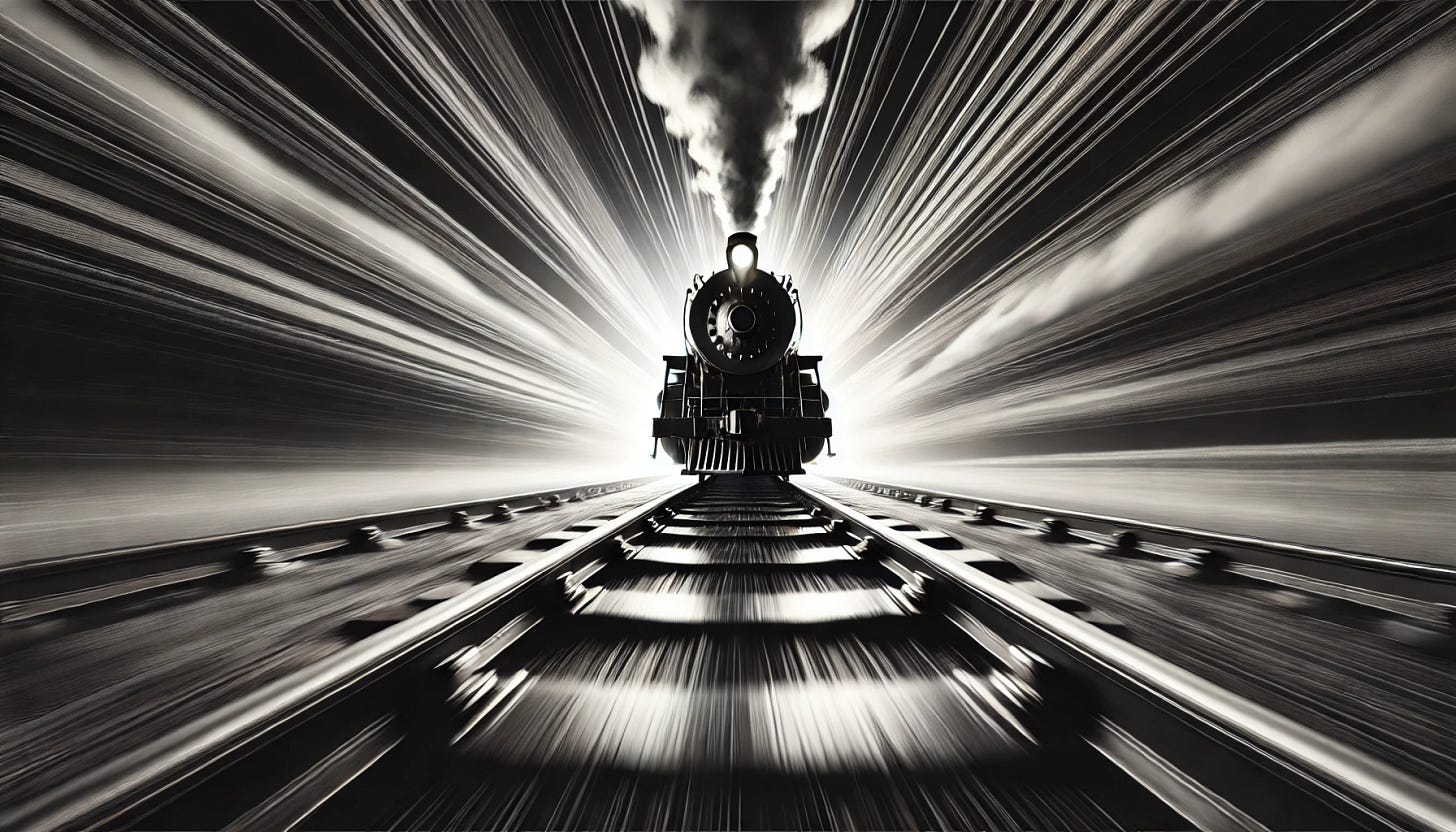The 18th Sutra from Patanjali
विरामप्रत्ययाभ्यासपूर्वः संस्कारशेषोऽन्यः
Virāma pratyayābhyāsa pūrvaḥ saṁskāra śeṣo’nyaḥ
By the firmly convinced practice of the complete cessation of the mental modifications, the impressions only remain. This is the other samadhi (asamprajnata or non-distinguished)
This is the second type of samadhi that Patanjali talks about. The previous sutra introduces samprajnata samadhi, which is explained as “differentiated” states of total absorption — simply, one is completely present with a given object of attention, but there is still the sense of object/subject relation.
In that sort of differentiated samadhi, there’s still a felt difference between the observer and the observed. The yogi has become completely devoted in their consciousness to whatever aspect of their experience they are choosing to pay attention to, but they are still identifying it as an object in their field of awareness.
Patanjali offers four gradations to that differentiated samadhi, which can essentially be looked at as devoting attention to wider and wider bands on the spectrum of conscious experience.
The gross (physical things that can be touched and felt clearly — rocks, strong emotions)
The subtle (non-physical things that have clear character but aren’t as obvious — colors, quiet intuitions)
The bliss (sense of joy that arises when space has been articulated around the self and the mind is relatively quiet)
The I-am-ness (the fact of being itself, “Self” with a capital “s”)
The samadhi he’s talking about in this, the 18th sutra, is like step 5.
Here’s the process in basic terms, spread out over the course of a supposed lifetime for context:
Beyond simply reacting to physical sensations unconsciously (repeat pleasure, avoid pain) the yogi learns to devote attention to these things specifically (on purpose, as an act of will) — they can now learn from them and use the information they provide to create a sense of greater physical freedom in the body.
After years of practice, the yogi has built up a quality of steadiness and ease within the gross, felt experience of the body (they can hold warrior 2 for a few minutes comfortably) — so they begin to pay attention to the subtler appearances during their practice…thoughts, notions, and ingrained patterns that have quietly been influencing the way they move through the world.
After more years, the yogi has learned to let these mental fluctuations settle into the background of their conscious experience, and within the space that those fluctuations used to occupy is now just simply the experience of being itself — which is often experienced as joy / bliss as it balloons into the consciousness in lieu of the “stuff” that previously occupied that space.
When the yogi learns to maintain that spaciousness inside their conscious field of awareness, there’s only one object left to devote attention to — the space itself…still experienced from a “seat” of awareness, as if the yogi were an object within the space.
Finally, the yogi learns to relinquish the sense of being an object within that space, and begins to experience themself as the space, rather than an observer of it.
The sense of “I” gives way to just…”am”.
If that’s hard to wrap your head around, here’s a line of inquiry that I like to work with to guide my thinking mind towards these ideas (which don’t always slot comfortably into the existing library of experiences and ideas that my brain is busily sorting and evaluating) —
If, in this next moment, all of my thoughts were to subside completely, what would be left?
Seriously, think about it. If this (seemingly) constant train of thought came to a stop for a moment, would the world around me continue existing?
What’s the first moment of that experience like? What about the second and third?
It’s easy just to charge right past that idea — “the train just keep moving of course, it never stops! mwahaha” — the mind can be like a madman shoveling coal into the engine even as it careens off the rails.
The bottomline is that the concept of cessation is hard (maybe impossible) to wrap your head around if you’ve never at least experienced the calming of those fluctuations.
That’s where the practice of yoga has been laid down for us by the sages as roadmap to these deeper spaces within our (perhaps illusory) selves 🙂
Every time you step into a yoga practice and take an hour to move through a flow is like letting that train pull into a station and make a stop on it’s wayward way.
I’m not saying your mind just stops the instant you step on your mat. There’s still a lot of movement going on, just like a train station though, right? Some thoughts get on, some thoughts get off. The train gets back up to speed, but then you allow it to stop again. Same thing happens.
It might still seem like it’s going to go on forever. Maybe for every thought that gets off, another 3 get on and the train becomes crowded with fluctuations and residuals hanging out the windows as it carries on.
But the more you choose to pull into station and present the opportunity for lightening your load, the more aware you will likely become of the state of this train. When, even if by seeming luck or happenstance, most of your passengers disembark at a station — the attentive conductor feels that sense of lightness. It’s easier to get underway again, with less weight.
And I think it’s that subtle feeling that can guide you back to those stations where the load lightens.
Eventually, with great patience, discipline and releasing the expectation of these pesky passengers [thoughts] to just get off already(!), maybe a day comes where the train is empty. It’s just you and the open rails ahead.
Nothing to carry, nobody to knock on your cockpit door and ask where the bathroom is — just you and the experience of being a train conductor.
But without all these passengers, what are you even doing driving a train?
Are you a conductor anymore, or have you become a passenger yourself?
Is there a difference now that it’s only you riding these rails?
Perhaps in that moment, you quit feeding the engine…
Over some time, the momentum subsides…
Wheels stop turning…
Doors open up…
At the final station.
Disembark.






